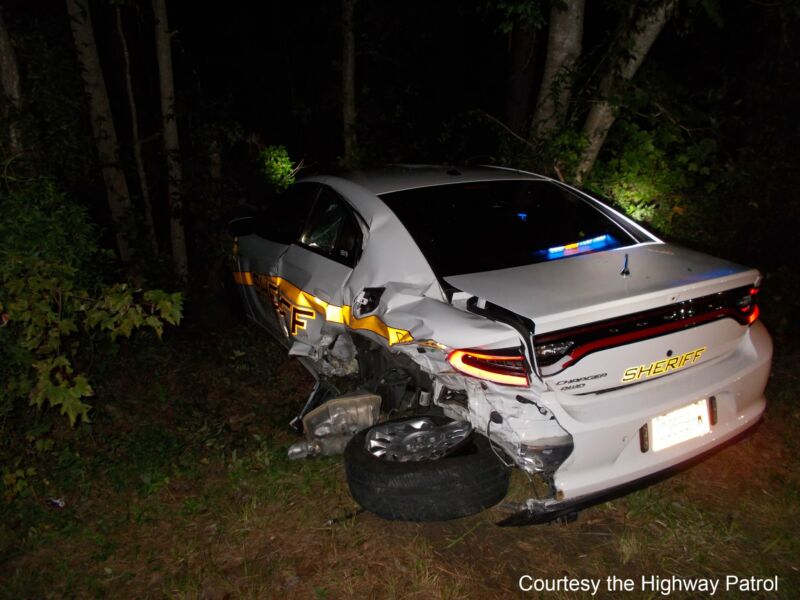
Police in North Carolina have filed charges against a driver whose Tesla crashed into a police car early Wednesday morning, Raleigh's CBS 17 television reports. The driver admitted to officers that he had activated the Autopilot technology on his Model S and was watching a movie on his phone at the time of the crash.
"A Nash County deputy and a trooper with the Highway Patrol were on the side of the road while responding to a previous crash when the Tesla slammed into the deputy’s cruiser," CBS 17 reports. "The impact sent the deputy’s cruiser into the trooper’s vehicle—which pushed the trooper and deputy to the ground."
Thankfully, no one was seriously injured by the crash.
The driver was charged with a violation of the state's "move over" law and with having a television in the car.
It's an important reminder that no car on the market today is fully self-driving. Drivers need to pay attention to the road at all times, regardless of what kind of car they have or what kind of driver-assistance technology their car has.
Tesla could use better driver monitoring technology
In the last year, there have been at least three similar incidents involving Tesla vehicles crashing into police cars. This happened in Arizona in July and in Connecticut and Massachusetts last December.
To be fair, this isn't just a Tesla problem. Studies have found that driver-assistance systems like Autopilot—from Tesla and other automakers—are not good at stopping for stationary vehicles. A study earlier this month found that driver assistance systems from BMW, Kia, and Subaru failed to consistently stop for stationary vehicles on a test track.
Still, Tesla clearly has room for improvement. Obviously, it would be good if Autopilot could actually detect stopped vehicles. But Tesla could also use better driver monitoring technology.
Tesla vehicles use a steering wheel torque sensor to try to detect whether a driver is paying attention. This kind of sensor is easy to defeat. It's also possible to keep a hand on the wheel without actually paying attention to the road.
Tesla could learn from Cadillac, whose Super Cruise technology includes an eye-tracking camera that verifies that the driver is looking at the road. An eye-tracking system like this would likely prevent incidents like Wednesday's crash in North Carolina. If the driver had tried to watch a movie while Autopilot was engaged, the system would have detected that he was not watching the road, warned the driver, and eventually deactivated itself.
reader comments
251